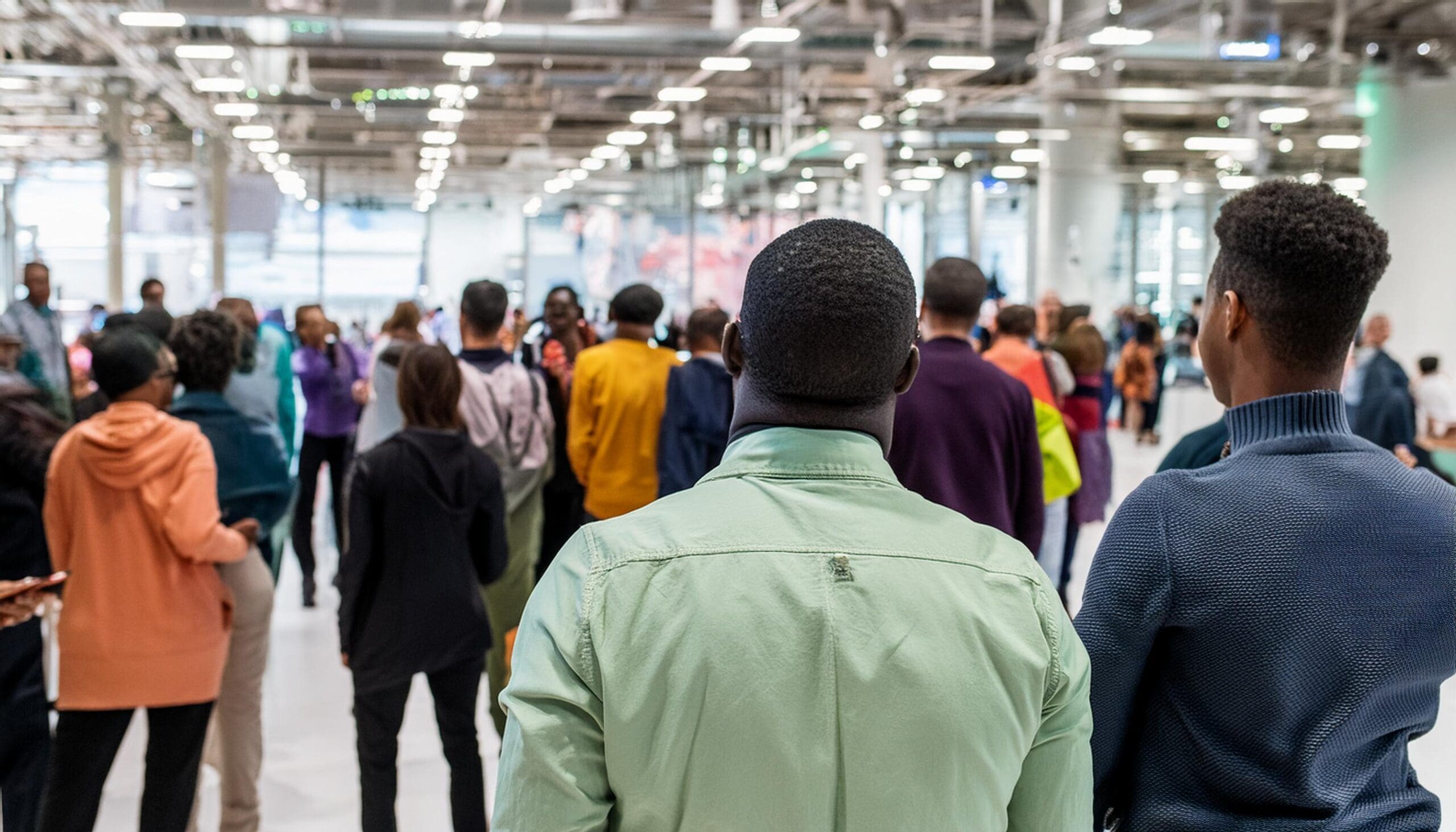In the dynamic world of event planning, the adage “two heads are better than one” has never been more relevant. As events grow in complexity and attendees’ expectations continue to rise, savvy event planners are increasingly turning to strategic partnerships to elevate their offerings and create truly unforgettable experiences. The power of collaboration in event planning lies not just in sharing resources, but in combining diverse expertise, expanding reach, and unlocking new realms of creativity and innovation.
Strategic event partnerships represent a paradigm shift in how we approach event planning. Gone are the days when a single organization could effectively manage every aspect of a large-scale event. Today’s most successful gatherings are often the result of carefully crafted alliances between complementary entities, each bringing their unique strengths to the table. These partnerships can take many forms, from collaborations between businesses and non-profits to joint ventures between industry leaders and up-and-coming innovators.
But what exactly do we mean by strategic event partnerships? At its core, a strategic event partnership is a purposeful collaboration between two or more organizations to co-create an event that delivers enhanced value to attendees, stakeholders, and the partnering entities themselves. These partnerships go beyond simple sponsorships or vendor relationships; they involve shared vision, joint planning, and mutual investment in the event’s success. The key word here is “strategic” – these partnerships are not formed on a whim, but are carefully considered alliances designed to achieve specific, mutually beneficial objectives.
The Transformative Impact of Collaborative Event Planning
When executed effectively, strategic event partnerships can transform an ordinary gathering into an extraordinary experience. They allow event planners to:
- Expand Reach and Diversity: By combining audience bases and marketing efforts, partnerships can significantly increase an event’s reach and attract a more diverse attendee pool.
- Enhance Content and Programming: Collaborations often lead to richer, more diverse content as partners bring their unique perspectives and expertise to the table.
- Optimize Resource Utilization: Shared resources can lead to cost savings and the ability to invest in higher-quality experiences for attendees.
- Boost Credibility and Prestige: Partnering with respected organizations or thought leaders can elevate an event’s profile and attract high-caliber speakers and attendees.
- Drive Innovation: The synergy created by partnerships often leads to creative solutions and innovative approaches to common event challenges.
As we delve deeper into the world of strategic event partnerships, we’ll explore how to identify the right partners, build successful collaboration strategies, and leverage technology to streamline the partnership process. We’ll also examine real-world case studies, discuss common challenges, and look at the future of collaborative event planning.
Whether you’re organizing a corporate conference, a non-profit fundraiser, or a community festival, understanding the power of strategic partnerships can be the key to taking your event to the next level. Join us as we uncover the secrets to maximizing event impact through the art of collaboration.
Understanding the Value of Strategic Event Partnerships
Strategic event partnerships offer a wealth of benefits that can significantly enhance the impact and success of your events. By collaborating with the right partners, event planners can unlock new opportunities and overcome challenges that might be insurmountable when working alone. Let’s explore the key areas where strategic partnerships can add substantial value to your event planning efforts.
Expanding Reach and Audience
One of the most immediate benefits of strategic partnerships is the ability to expand your event’s reach and diversify your audience:
- Combined Marketing Power: By pooling marketing resources and channels, partners can create a more comprehensive and far-reaching promotional campaign. This collaborative approach often results in increased visibility and higher attendance rates.
- Access to New Demographics: Each partner brings its own unique audience base. This cross-pollination of attendees can introduce your event to previously untapped demographics, broadening your event’s appeal and impact.
- Enhanced Social Media Presence: Leveraging the social media followings of multiple partners can dramatically increase your event’s online visibility and engagement.
- Wider Geographic Reach: Partnerships, especially those with organizations in different regions, can help extend your event’s geographic footprint, potentially transforming a local gathering into a national or even international affair.
Sharing Resources and Expertise
Collaboration allows partners to pool their resources and knowledge, leading to more robust and innovative event experiences:
- Diverse Skill Sets: Each partner brings unique skills and expertise to the table. This diversity can lead to more creative problem-solving and innovative event elements.
- Shared Technological Resources: Partners can share access to advanced event management platforms, like SyncEvent, enhancing the overall efficiency of event planning and execution.
- Combined Talent Networks: Partnerships often mean access to a wider network of speakers, performers, and industry experts, elevating the quality of your event’s content.
- Pooled Physical Resources: From venue options to equipment, partnerships can expand the pool of available physical resources, potentially reducing costs and improving event quality.
Enhancing Credibility and Brand Value
Strategic partnerships can significantly boost your event’s prestige and your organization’s brand value:
- Increased Trust: Associating with respected partners can enhance your event’s credibility, making it more attractive to potential attendees, sponsors, and high-profile speakers.
- Brand Alignment: Carefully chosen partnerships allow you to align your brand with complementary values and audiences, strengthening your market position.
- Thought Leadership: Collaborations often lead to the creation of unique, high-value content that positions your event (and by extension, your organization) as a thought leader in your industry.
- Media Attention: High-profile partnerships can attract media interest, providing valuable exposure and publicity for your event and all involved parties.
Mitigating Risks and Costs
Strategic partnerships can be an effective way to manage the financial and operational risks associated with event planning:
- Shared Financial Burden: By dividing costs among partners, you can reduce the financial risk for each individual organization and potentially invest in higher-quality event elements.
- Diversified Revenue Streams: Partnerships often open up new revenue opportunities, such as joint sponsorships or collaborative product launches, helping to offset costs.
- Risk Distribution: Sharing responsibilities means sharing risks. If one aspect of the event faces challenges, you have a support network to help address issues quickly and effectively.
- Economies of Scale: Larger, collaborative events can often negotiate better rates with vendors and venues, leading to cost savings for all involved.
By leveraging these benefits, strategic event partnerships can transform your events from good to great, creating memorable experiences that resonate with a wider audience while managing costs and risks effectively. As we move forward, we’ll explore how to identify the right partners and build successful collaboration strategies to maximize these benefits.
Remember, platforms like SyncEvent can play a crucial role in facilitating these partnerships, offering tools for collaborative planning, shared data analysis, and integrated marketing efforts. By choosing the right technology alongside the right partners, you can create a powerful synergy that elevates your events to new heights.
Identifying Potential Strategic Partners
The success of your strategic event partnerships largely depends on choosing the right collaborators. Identifying potential partners that align with your event goals, values, and target audience is crucial. Let’s explore the various types of entities that can make excellent strategic partners for your events.
Complementary Businesses and Organizations
Look for businesses or organizations that offer products or services that complement your event’s focus without directly competing:
- Industry Adjacents: Identify businesses that operate in related fields. For example, a tech conference might partner with a software development company or a digital marketing agency.
- Supply Chain Partners: Consider collaborating with businesses along your industry’s supply chain. This can provide attendees with a more comprehensive understanding of the field.
- Educational Institutions: Universities and training centers can bring academic expertise and research insights to your event, enhancing its educational value.
- Professional Associations: Partnering with relevant professional associations can lend credibility to your event and help attract a targeted audience of industry professionals.
Sponsors and Vendors
While traditional sponsorship models are common, consider elevating these relationships to true strategic partnerships:
- Long-term Sponsors: Approach your regular sponsors about deeper collaboration. They already see value in your events and may be open to more involved partnerships.
- Technology Providers: Companies that offer event-related technologies (like registration systems or engagement platforms) can be valuable partners, providing both financial support and enhancing your event’s tech capabilities.
- Service Providers: Consider partnering with companies that provide essential event services (catering, AV, etc.) to create unique, integrated experiences for your attendees.
- Media Partners: Collaborating with industry publications or media outlets can significantly boost your event’s visibility and provide valuable content creation opportunities.
Influencers and Thought Leaders
Partnering with influential individuals in your industry can greatly enhance your event’s appeal and reach:
- Industry Experts: Collaborate with recognized experts to develop cutting-edge content and attract high-quality attendees.
- Social Media Influencers: Partner with influencers who have a strong following in your target demographic to expand your event’s reach and appeal.
- Authors and Speakers: Engage with popular authors or speakers in your field to create unique content experiences for your attendees.
- Alumni Networks: If applicable, tap into alumni networks of previous successful events to find individuals who have become influencers in their own right.
Local Communities and Government Entities
Especially for larger events or those with a significant local impact, consider partnerships with:
- Local Governments: Collaborating with city or regional governments can provide access to resources, venues, and local promotion channels.
- Chambers of Commerce: These organizations can help connect you with local businesses and promote your event to their networks.
- Tourism Boards: Partnering with tourism boards can be mutually beneficial, helping to promote your event while boosting local tourism.
- Community Organizations: Nonprofits or community groups aligned with your event’s theme or values can bring passionate supporters and add a meaningful dimension to your event.
When identifying potential partners, consider how their strengths and resources complement your own. Look for organizations that share your values and have a genuine interest in the success of your event. Remember, the best partnerships are those where both parties stand to gain significant value.
Utilizing an event management platform like SyncEvent can be invaluable in this process. Its networking features can help you identify potential partners among your existing contacts and attendees from previous events. Additionally, the platform’s data analytics capabilities can provide insights into your audience demographics and preferences, helping you pinpoint the most relevant potential partners for your specific event goals.
By carefully selecting strategic partners from these categories, you can create a collaborative event that offers unparalleled value to your attendees while expanding your reach and resources. In the next section, we’ll explore how to approach and build successful relationships with these potential partners.
Building Successful Partnership Strategies
Once you’ve identified potential strategic partners, the next crucial step is to build a solid foundation for your collaboration. A well-structured partnership strategy ensures that all parties are aligned, communication is clear, and mutual benefits are realized. Let’s explore the key elements of building successful partnership strategies for your events.
Defining Clear Objectives and Expectations
The cornerstone of any successful partnership is a shared understanding of goals and expectations:
- Joint Goal Setting: Collaborate with your partners to establish clear, measurable objectives for the event. These might include attendance targets, engagement metrics, or specific outcomes for attendees.
- Role Clarification: Clearly define the roles and responsibilities of each partner. This helps prevent overlap, ensures all aspects of the event are covered, and avoids potential conflicts.
- Resource Allocation: Be explicit about what resources each partner will contribute, whether it’s funding, personnel, technology, or other assets.
- Timeline Agreement: Develop a shared timeline for key milestones and deliverables. This keeps all parties accountable and ensures the event planning stays on track.
- Success Metrics: Agree on how you’ll measure the success of both the event and the partnership itself. This might include quantitative metrics like ROI as well as qualitative assessments of the collaboration process.
Aligning Values and Brand Identities
For a partnership to truly resonate with attendees, there needs to be a natural fit between the collaborating organizations:
- Value Alignment: Ensure that your partner’s core values align with your own. This alignment will be evident to attendees and contribute to a cohesive event experience.
- Brand Synergy: Look for ways to create synergy between your brand identities. This could involve co-creating a unique event brand that incorporates elements from all partners.
- Audience Compatibility: Confirm that your target audiences are compatible or complementary. The goal is to expand reach without diluting the event’s focus or alienating existing supporters.
- Consistent Messaging: Develop a unified messaging strategy that reflects the values and goals of all partners while maintaining a consistent voice for the event.
Establishing Effective Communication Channels
Clear, consistent communication is vital for the success of any collaborative effort:
- Regular Check-ins: Schedule frequent meetings or calls to keep all partners updated on progress, challenges, and changes.
- Centralized Information Hub: Utilize a shared platform or tool where all partners can access important documents, timelines, and updates. Many event management platforms, including SyncEvent, offer collaborative features that can serve this purpose.
- Designated Point Persons: Appoint a primary contact from each partner organization to streamline communication and decision-making processes.
- Feedback Mechanisms: Establish channels for ongoing feedback between partners. This allows for continuous improvement and helps address any issues promptly.
Creating Win-Win Scenarios for All Parties Involved
The most successful partnerships are those where every participant gains significant value:
- Mutual Benefit Identification: Work with each partner to identify specific benefits they hope to gain from the collaboration. Ensure that the partnership strategy addresses these desired outcomes.
- Balanced Contributions and Returns: Strive for a balance where each partner’s contributions are proportional to their potential returns. This fosters a sense of fairness and commitment to the partnership.
- Shared Risk and Reward: Develop strategies that allow all partners to share in both the risks and rewards of the event. This might involve profit-sharing agreements or joint investment in new initiatives.
- Cross-Promotion Opportunities: Create opportunities for partners to promote their brands or offerings in ways that add value to the event experience rather than feeling like overt advertising.
- Long-term Relationship Building: Look beyond the immediate event to identify opportunities for ongoing collaboration. A successful partnership can lead to future joint ventures and sustained mutual growth.
By focusing on these key areas – clear objectives, aligned values, effective communication, and mutual benefits – you can build partnership strategies that not only enhance your current event but also lay the groundwork for long-term collaborative success.
Remember, tools like SyncEvent can play a crucial role in facilitating these strategies. From shared project management features to data analytics that help track mutual goals, the right event management platform can significantly streamline your partnership efforts. As you move forward with your collaborations, consider how technology can support and enhance your partnership strategies, making the process smoother and more effective for all involved parties.
Leveraging Technology in Collaborative Event Planning
In today’s digital age, technology plays a crucial role in facilitating effective collaboration, especially when it comes to event planning. The right tools can streamline processes, enhance communication, and provide valuable insights for strategic decision-making. Let’s explore how you can leverage technology to maximize the success of your collaborative event planning efforts.
Using Event Management Platforms for Seamless Coordination
Event management platforms serve as the central hub for all your planning activities, offering a range of features designed to support collaboration:
- Centralized Information: These platforms provide a single source of truth for all event-related information, ensuring all partners are working with the most up-to-date data.
- Task Assignment and Tracking: Easily delegate responsibilities among partners and track progress in real-time, reducing the risk of tasks falling through the cracks.
- Shared Calendars: Synchronize timelines across all partners, making it easier to coordinate deadlines and key milestones.
- Document Sharing: Store and share important documents, contracts, and marketing materials in one secure location accessible to all authorized partners.
- Communication Tools: Many platforms include built-in messaging or discussion forums, facilitating quick and easy communication between team members.
SyncEvent, for example, offers a comprehensive suite of tools designed to support collaborative event planning, from shared task lists to integrated communication features.
Implementing Shared Project Management Tools
While event management platforms cover many bases, dedicated project management tools can offer additional benefits:
- Gantt Charts: Visualize the entire event timeline, including dependencies between tasks, to ensure smooth execution across all partners.
- Kanban Boards: Use visual task management boards to track the status of various event elements and easily identify bottlenecks.
- Time Tracking: Monitor the time spent on different tasks to help with resource allocation and future planning.
- Collaboration Features: Many project management tools offer features like real-time editing, commenting, and @mentions to enhance team communication.
Utilizing Data Analytics for Informed Decision-Making
Data-driven insights can significantly enhance the effectiveness of your collaborative efforts:
- Attendee Insights: Analyze data from past events or early registrations to understand attendee preferences and tailor your event accordingly.
- Performance Metrics: Track key performance indicators (KPIs) in real-time to measure the success of various event elements and make data-backed decisions.
- Predictive Analytics: Use historical data and current trends to forecast attendance, resource needs, and potential challenges.
- ROI Measurement: Implement tools to track and analyze the return on investment for different aspects of your event, helping to justify decisions to all partners.
- Sentiment Analysis: Use social media monitoring tools to gauge public sentiment about your event and partners, allowing for quick adjustments if needed.
Integrating Partner Systems for Enhanced Efficiency
To truly maximize efficiency, consider integrating the various systems used by different partners:
- API Connections: Utilize application programming interfaces (APIs) to connect different software systems, ensuring seamless data flow between partners.
- Single Sign-On (SSO): Implement SSO solutions to allow team members from different organizations to access shared tools without multiple logins.
- Data Synchronization: Ensure that key data points are synchronized across all partner systems to maintain consistency and reduce manual data entry.
- Custom Integrations: Where necessary, develop custom integrations to connect specialized tools used by specific partners with your main event management platform.
- Automated Workflows: Create automated workflows that span across different systems to streamline processes and reduce the risk of human error.
By leveraging these technological solutions, you can create a more seamless and efficient collaborative event planning process. The right mix of tools can enhance communication, improve decision-making, and ultimately lead to more successful events.
Remember, while technology is a powerful enabler, it’s important to choose solutions that align with your specific needs and those of your partners. Consider factors like ease of use, scalability, and compatibility with existing systems when selecting tools for your collaborative event planning efforts.
Platforms like SyncEvent are designed with collaboration in mind, offering many of these features in one integrated solution. By centralizing your event management activities on a platform that supports multi-party collaboration, you can significantly streamline your planning process and enhance the overall success of your strategic partnerships.
The Impact of Strategic Event Partnerships: Real-World Benefits
While specific case studies can provide valuable insights, it’s equally important to understand the broader trends and benefits that strategic event partnerships can bring. Let’s explore how different types of events have benefited from collaborative approaches, based on industry observations and general trends.
Corporate Conferences: Expanding Horizons
In the world of corporate conferences, strategic partnerships have been shown to:
- Diversify Content: Collaborations between companies in related fields often lead to more comprehensive and diverse conference programs, offering attendees a broader perspective on industry trends.
- Increase Attendance: By combining audience bases, partnered events typically see higher attendance rates compared to solo-organized conferences.
- Enhance Networking Opportunities: Multi-company events provide attendees with a wider range of networking possibilities, often leading to more valuable connections and potential business opportunities.
- Share Costs and Risks: Partnerships allow companies to share the financial burden and risks associated with large-scale events, often resulting in higher-quality experiences for attendees.
Non-Profit Fundraising Events: Amplifying Impact
Strategic partnerships have proven particularly beneficial for non-profit organizations:
- Expand Reach: Collaborations, especially with corporate partners, often help non-profits reach new donor demographics they might not have accessed otherwise.
- Increase Donations: Partnered events frequently report higher donation totals, likely due to the combined efforts in promotion and the added credibility that partnerships can bring.
- Enhance Event Experience: By partnering with businesses or other organizations, non-profits can often offer more engaging and professional event experiences, which can lead to increased attendee satisfaction and future support.
- Leverage Expertise: Partnerships allow non-profits to tap into specialized skills they might not have in-house, such as marketing expertise or event management experience.
Product Launch Events: Creating Buzz
In the competitive world of product launches, strategic partnerships have shown to:
- Generate More Media Attention: Collaborative launches, especially between complementary brands, often attract more media coverage than single-brand events.
- Provide Comprehensive Solutions: Partnerships between brands with complementary products can showcase more holistic solutions to customer needs, potentially increasing overall sales.
- Share Market Insights: Collaborating companies can benefit from each other’s market research and customer insights, leading to more targeted and effective launch strategies.
- Reduce Market Entry Barriers: For new or smaller brands, partnering with established companies can help overcome market entry challenges and quickly build credibility.
While these benefits are observed across the industry, it’s important to note that the success of any strategic partnership depends on careful planning, clear communication, and the right technological support. Platforms like SyncEvent can play a crucial role in facilitating these partnerships, offering tools for collaborative planning, shared data analysis, and integrated marketing efforts.
By leveraging the power of strategic partnerships and utilizing robust event management platforms, event planners can create more impactful, engaging, and successful events across various industries and event types. As the events industry continues to evolve, the ability to form and manage effective partnerships will likely become an increasingly valuable skill for event professionals.
Overcoming Challenges in Collaborative Event Planning
While strategic partnerships can bring numerous benefits to event planning, they also come with their own set of challenges. Recognizing and addressing these challenges early on is crucial for the success of your collaborative efforts. Let’s explore some common hurdles and strategies to overcome them.
Managing Different Organizational Cultures
When organizations with distinct cultures come together, friction can arise:
- Open Communication: Foster an environment of open dialogue where partners can freely discuss their working styles and preferences.
- Cultural Awareness Training: Consider organizing brief workshops to help team members understand and appreciate each other’s organizational cultures.
- Establish Common Ground: Identify shared values and goals that can serve as a foundation for your collaboration.
- Flexible Work Practices: Be willing to adapt and compromise on working methods to find a middle ground that suits all parties.
- Lead by Example: Event leaders should model the behavior of cultural sensitivity and adaptability they expect from their teams.
Balancing Partner Expectations and Contributions
Ensuring fairness and equity in partnerships is essential for long-term success:
- Clear Agreements: Develop detailed partnership agreements that outline expectations, responsibilities, and contributions from each party.
- Regular Check-ins: Schedule frequent meetings to assess progress, address concerns, and adjust plans as needed.
- Transparent Resource Allocation: Use project management tools to track and display resource contributions transparently. SyncEvent’s collaborative features can be particularly useful for this.
- Equitable Decision-Making: Implement a fair decision-making process that gives appropriate weight to each partner’s input.
- Recognize and Celebrate Contributions: Regularly acknowledge the efforts and achievements of all partners to maintain motivation and engagement.
Addressing Potential Conflicts of Interest
In any partnership, there’s potential for conflicting interests to arise:
- Proactive Identification: Conduct a thorough analysis at the outset to identify potential areas of conflict.
- Establish Conflict Resolution Procedures: Agree on a process for addressing conflicts before they occur.
- Maintain Transparency: Encourage partners to be open about their individual goals and potential concerns.
- Focus on Shared Objectives: Regularly remind all parties of the overarching shared goals to help navigate through conflicting interests.
- Neutral Mediation: Consider involving a neutral third party to mediate discussions when conflicts arise.
Maintaining Brand Integrity While Collaborating
Preserving individual brand identities within a partnership can be challenging:
- Clear Brand Guidelines: Establish clear guidelines for how each brand will be represented in joint marketing materials and at the event itself.
- Complementary Positioning: Work to position partner brands in ways that complement rather than compete with each other.
- Balanced Visibility: Ensure that all partners receive appropriate visibility in proportion to their contributions.
- Consistent Messaging: Develop a unified messaging strategy that aligns with all partners’ brand values.
- Collaborative Creativity: Involve creative teams from all partners in developing event branding that represents everyone effectively.
By proactively addressing these challenges, you can create a more harmonious and effective collaborative event planning process. Remember, the key to overcoming these hurdles often lies in clear communication, mutual respect, and a willingness to find creative solutions.
Utilizing a comprehensive event management platform like SyncEvent can significantly aid in navigating these challenges. With features designed to support collaboration, such as shared project timelines, resource allocation tracking, and integrated communication tools, SyncEvent can help keep your partnership on track and focused on creating an exceptional event experience.
As you move forward with your strategic partnerships, keep in mind that overcoming these challenges not only leads to successful events but also builds stronger, more resilient relationships that can benefit your organization in the long term.
Measuring the Success of Strategic Partnerships
To ensure the effectiveness of your strategic partnerships and to guide future collaborations, it’s crucial to measure their success. This involves looking at both immediate event outcomes and long-term partnership benefits. Let’s explore how to evaluate the success of your strategic event partnerships.
Defining Key Performance Indicators (KPIs)
Establishing clear, measurable KPIs is the first step in assessing partnership success:
- Attendance Metrics: Track not only total attendance but also attendance from each partner’s network to gauge the reach of your collaboration.
- Engagement Rates: Measure attendee participation in various event activities, sessions, or digital interactions.
- Brand Exposure: Assess the visibility and mentions of each partner’s brand throughout the event and in related media coverage.
- Lead Generation: Quantify the number and quality of leads generated for each partner.
- Partnership Satisfaction: Use surveys to measure each partner’s satisfaction with the collaboration process and outcomes.
- Operational Efficiency: Evaluate how the partnership affected event planning and execution efficiency.
SyncEvent’s analytics tools can be particularly useful in tracking many of these KPIs, providing real-time data and post-event reports to help you assess performance accurately.
Analyzing Attendee Feedback and Engagement
Attendee response is a critical indicator of partnership success:
- Satisfaction Surveys: Conduct post-event surveys to gather attendee feedback on various aspects of the event, including those specific to the partnership.
- Social Media Sentiment: Monitor social media mentions and sentiment related to the event and the partnership.
- Session Attendance: Analyze attendance and engagement levels for different sessions or activities, particularly those showcasing the partnership.
- Networking Metrics: If applicable, measure the number and quality of connections made between attendees from different partner networks.
- App or Platform Usage: For events with digital components, assess how attendees interacted with partnership-related content or features.
Evaluating Financial Outcomes and ROI
Financial metrics are key to understanding the tangible benefits of the partnership:
- Revenue Generation: Calculate the total revenue generated from the event, including ticket sales, sponsorships, and any on-site purchases.
- Cost Savings: Assess how the partnership affected event costs compared to solo-organized events.
- ROI Calculation: Determine the return on investment for each partner, considering both financial and non-financial inputs and outcomes.
- Revenue Sharing: If applicable, evaluate the effectiveness and fairness of any revenue-sharing agreements.
- Future Sales Impact: Track any increase in sales or business opportunities that can be attributed to the event partnership.
Assessing Long-Term Relationship Benefits
The value of strategic partnerships often extends beyond a single event:
- Audience Growth: Measure the expansion of each partner’s audience or customer base resulting from the collaboration.
- Knowledge Transfer: Evaluate any skills or knowledge gained by team members through working with partners.
- Brand Perception Changes: Assess how the partnership has affected each organization’s brand perception in the market.
- Future Collaboration Opportunities: Identify potential areas for ongoing collaboration or future joint ventures.
- Industry Influence: Gauge any increase in industry influence or thought leadership status resulting from the partnership.
By comprehensively measuring these aspects of your strategic partnerships, you can gain valuable insights into their effectiveness and value. This data not only helps in refining current partnerships but also informs decisions about future collaborations.
Remember, while quantitative metrics are important, don’t overlook qualitative feedback. The insights gained from debriefing sessions with partners and team members can be invaluable in understanding the full impact of your collaboration.
Platforms like SyncEvent can play a crucial role in this measurement process. By centralizing data collection, facilitating easy survey distribution, and providing powerful analytics tools, such platforms can streamline the evaluation process and help you derive meaningful insights from your partnership efforts.
Ultimately, the goal of measuring partnership success is not just to assess past performance, but to continuously improve and optimize your collaborative efforts for future events. Use these insights to refine your approach, strengthen your partnerships, and create even more impactful events in the future.
Best Practices for Nurturing Long-term Partnerships
Strategic partnerships in event planning can yield significant benefits when nurtured over time. Building lasting relationships with your partners can lead to continued success, innovation, and growth. Let’s explore some best practices for maintaining and strengthening these valuable collaborations.
Regular Performance Reviews and Feedback Sessions
Consistent evaluation and open communication are key to partnership longevity:
- Scheduled Check-ins: Establish a regular cadence of partnership review meetings, perhaps quarterly or bi-annually, outside of specific event planning cycles.
- 360-Degree Feedback: Implement a comprehensive feedback system where all stakeholders can share their perspectives on the partnership’s effectiveness.
- Data-Driven Discussions: Use analytics from your event management platform, such as SyncEvent, to guide these reviews with concrete data on event performance and collaboration efficiency.
- Action Planning: Conclude each review session with clear action items for improvement, assigning responsibilities and deadlines.
- Transparent Reporting: Share performance reports with all partners to maintain transparency and trust in the collaboration.
Continuous Improvement and Innovation in Collaboration
Stagnation can be detrimental to partnerships. Focus on ongoing enhancement and creativity:
- Innovation Workshops: Host regular brainstorming sessions to generate fresh ideas for events and collaboration methods.
- Cross-Training Opportunities: Facilitate knowledge sharing between partner organizations to broaden skills and perspectives.
- Technology Adoption: Stay abreast of new event technologies and collaboratively decide on tools that can enhance your partnership. SyncEvent’s evolving features can be a part of this ongoing improvement.
- Process Refinement: Continuously refine your collaborative processes, streamlining workflows and eliminating inefficiencies.
- Trend Analysis: Jointly monitor industry trends and discuss how your partnership can adapt to or capitalize on emerging opportunities.
Celebrating Shared Successes and Milestones
Recognition and celebration can significantly boost morale and strengthen partner bonds:
- Success Showcases: Organize events or create content that highlights the achievements of your partnership.
- Public Recognition: Acknowledge your partners’ contributions in press releases, social media, and industry forums.
- Team Celebrations: Plan team-building activities or celebrations that bring together staff from all partner organizations.
- Awards and Accolades: Consider creating partnership awards or jointly applying for industry recognition.
- Milestone Markers: Celebrate significant partnership milestones, such as the number of successful events or years of collaboration.
Planning for Future Joint Ventures
Looking ahead and planning for continued collaboration can solidify your partnership:
- Long-term Strategy Sessions: Conduct annual or bi-annual strategy meetings to align on long-term goals and vision for the partnership.
- Expansion Discussions: Regularly explore opportunities to expand the scope of your collaboration into new event types or markets.
- Resource Planning: Collaboratively forecast resource needs for future joint ventures, ensuring all partners are prepared for upcoming projects.
- Succession Planning: Develop plans for knowledge transfer and relationship continuity in case of staff changes within partner organizations.
- Joint Business Development: Explore opportunities for joint pitches or proposals to expand your collective event portfolio.
By implementing these best practices, you can nurture your strategic partnerships into long-lasting, mutually beneficial relationships. Remember, successful long-term partnerships require ongoing effort, open communication, and a shared commitment to growth and improvement.
Leveraging a comprehensive event management platform like SyncEvent can significantly aid in these efforts. Its collaborative features can facilitate ongoing communication, data sharing, and joint planning, helping to keep your partnership strong and productive between events.
As you continue to nurture your strategic partnerships, keep in mind that flexibility and adaptability are key. Be prepared to evolve your collaboration methods as your organizations grow and change, always keeping the shared goals of creating exceptional events and delivering value to your attendees at the forefront.
The Future of Strategic Event Partnerships
As the events industry continues to evolve, so too will the nature of strategic partnerships. Staying ahead of emerging trends and anticipating future developments can help event planners position themselves for continued success. Let’s explore what the future might hold for strategic event partnerships.
Emerging Trends in Collaborative Event Planning
The landscape of collaborative event planning is constantly shifting, with several key trends on the horizon:
- Hyper-Personalization: Partnerships will increasingly focus on leveraging combined data and AI to create highly personalized attendee experiences.
- Cross-Industry Collaborations: Expect to see more unexpected partnerships between organizations from different sectors, bringing fresh perspectives to events.
- Sustainability Alliances: Partnerships centered around creating more environmentally sustainable events will become increasingly common and important.
- Virtual and Physical Integration: Collaborations will continue to blur the lines between virtual and physical events, creating seamless hybrid experiences.
- Global Micro-Events: Partnerships may evolve to support coordinated series of smaller, localized events that tie into larger global themes.
The Role of Technology in Facilitating Partnerships
Technology will play an ever-increasing role in enabling and enhancing strategic partnerships:
- AI-Powered Matchmaking: Artificial intelligence will help identify potential strategic partners based on complementary strengths and goals.
- Blockchain for Transparency: Blockchain technology may be used to ensure transparent resource allocation and profit sharing between partners.
- Virtual Collaboration Spaces: Advanced virtual reality platforms could create immersive spaces for partners to plan and visualize events together, regardless of physical location.
- IoT for Real-Time Insights: Internet of Things (IoT) devices will provide partners with real-time data on event performance, allowing for on-the-fly adjustments.
- Integrated Platforms: Comprehensive event management platforms like SyncEvent will continue to evolve, offering more advanced features for multi-party collaboration and data sharing.
Predictions for Evolving Partnership Models
The structure and nature of strategic partnerships themselves are likely to change:
- Fluid Partnerships: Instead of long-term, fixed partnerships, we may see more fluid collaborations that come together for specific events or series.
- Ecosystem Approach: Events might be created by ecosystems of multiple partners, each bringing specialized expertise or resources to the table.
- Community-Driven Partnerships: Increased attendee involvement in event planning could lead to partnerships between organizers and attendee communities.
- AI as a Partner: As AI becomes more advanced, it could be considered a ‘partner’ in event planning, contributing to strategy and decision-making.
- Cross-Cultural Collaborations: Global events may increasingly rely on partnerships that bridge cultural divides, creating truly international experiences.
As we look to the future, it’s clear that strategic event partnerships will continue to be a crucial element in creating successful, impactful events. The key to thriving in this evolving landscape will be adaptability, openness to new ideas, and a willingness to embrace emerging technologies.
Event planners who can navigate these changes and leverage new partnership models will be well-positioned to create innovative, engaging events that meet the evolving needs of attendees. By staying informed about these trends and continuously refining your approach to partnerships, you can ensure that your events remain at the cutting edge of the industry.
Remember, platforms like SyncEvent are likely to play a pivotal role in this future, evolving alongside the industry to provide the tools and capabilities needed to manage these complex, dynamic partnerships. As you plan for the future, consider how your event management technology can support and enhance your ability to form and maintain effective strategic partnerships.
The future of strategic event partnerships is bright and full of possibilities. By embracing change and remaining committed to collaboration, event planners can look forward to creating even more extraordinary and impactful events in the years to come.
Elevating Events Through Strategic Partnerships
As we’ve explored the multifaceted world of strategic event partnerships, it’s clear that collaboration can be a powerful tool for creating exceptional events. Let’s recap the key benefits and strategies we’ve discussed:
- Expanded Reach and Resources: Partnerships allow you to tap into broader audiences and pool resources for greater impact.
- Enhanced Creativity and Innovation: Collaborative efforts often lead to fresh ideas and innovative approaches.
- Shared Risks and Rewards: Working together can mitigate individual risks while amplifying potential rewards.
- Increased Credibility and Brand Value: The right partnerships can elevate your event’s prestige and strengthen your brand.
To make the most of these benefits, remember these key strategies:
- Clearly define objectives and expectations for all parties involved.
- Ensure alignment in values and brand identities among partners.
- Establish open and effective communication channels.
- Regularly measure and evaluate the success of your partnerships.
- Continuously nurture and evolve your collaborative relationships.
As you consider embarking on or expanding your strategic partnerships, remember that the right tools can make a significant difference in the success of your collaborative efforts. This is where SyncEvent comes into play, offering a comprehensive platform designed to facilitate and enhance strategic event partnerships.
How SyncEvent Empowers Collaborative Event Planning
SyncEvent provides a range of features specifically tailored to support multi-party collaboration in event planning:
- Centralized Planning Hub: Our platform serves as a single source of truth for all partners, ensuring everyone has access to the latest information and updates.
- Multi-User Access Controls: Easily manage permissions and access levels for different partners, maintaining security while fostering collaboration.
- Real-Time Communication Tools: Built-in messaging and notification systems keep all partners in the loop, reducing email clutter and miscommunication.
- Shared Task Management: Collaboratively create, assign, and track tasks across partner organizations, ensuring nothing falls through the cracks.
- Collaborative Budgeting Tools: Work together on budgets in real-time, with clear visibility into contributions and expenditures for all partners.
SyncEvent also excels in data sharing and analytics capabilities, crucial for informed decision-making in partnerships:
- Customizable Dashboards: Create shared dashboards that display key metrics relevant to all partners.
- Advanced Reporting: Generate comprehensive reports that can be easily shared among partners.
- Attendee Insights: Gain valuable data on attendee behavior and preferences, helping all partners understand event performance.
Moreover, SyncEvent offers flexible integration options to connect with partner systems:
- API Access: Integrate SyncEvent with other tools and platforms used by your partners.
- Data Import/Export: Easily move data in and out of SyncEvent to sync with partner databases.
- Third-Party App Connections: Connect with a variety of third-party applications to extend functionality as needed by your partnership.
By leveraging these features, SyncEvent not only streamlines your collaborative event planning process but also provides the insights and tools needed to continually improve and evolve your partnerships.
As you move forward in your event planning journey, we encourage you to explore the potential of strategic partnerships. Whether you’re looking to expand your reach, enhance your offerings, or simply create more impactful events, collaboration could be the key to unlocking new levels of success.
Ready to take your collaborative event planning to the next level? Schedule a demo with SyncEvent today and discover how our platform can empower your strategic partnerships, streamline your planning process, and help you create truly exceptional events.
Remember, in the world of event planning, we’re stronger together. Embrace the power of strategic partnerships, and let SyncEvent be the bridge that connects you with success.












